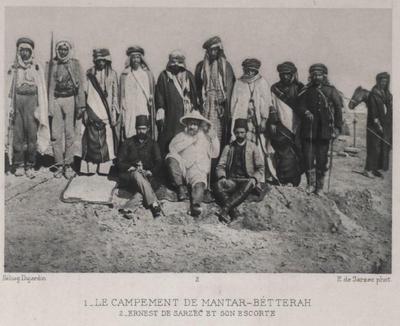Local sources on Mesopotamian archaeology in late Ottoman Iraq
An unwritten rule reigns over my field: Art-historical and archaeological studies on ancient Mesopotamia do not integrate Ottoman primary sources, while historians of the late Ottoman Empire are not interested in art-historical and archaeological method and theory. Although there are several notable exceptions,1 the traditional disciplinary barriers stand firm.
As nineteenth-century explorations in Ottoman Iraq led to the establishment of the modern discipline of ancient Western Asian archaeology, the abovementioned divide has had direct repercussions on which stories were told and which were left behind. This, I believe, is the reason why our discipline still cannot dispense with longwinded “great-man histories,” or rather hagiographies, which revolve around the lives and deeds of consul-archaeologists who excavated an assumed terra incognita, and which shun exploring existing networks and structures of power.
Furthermore, it is quite astonishing to me that book-length histories of Mesopotamian archaeology can be written and published in the West today without a single reference to sources in local languages. This neglect concerns not only the Ottoman archives or nineteenth-century diaries and travel accounts but also modern, local scholarship. For example, half a century after the bylaw of 1869 was discussed by Ahmet Mumcu,2 and later published in full by Halit Çal,3 there are still prominent western scholars who argue that the earliest Ottoman regulations on the protection, excavation and export of antiquities date to 1874.4 The issue here is not only a matter of leaving out five (critical) years, during which these two starkly different laws helped shape the convoluted path of institutionalization. It also has to do with politics of citation,5 and is the symptom of a deeper theoretical and methodological flaw: such scholars do not feel the need to diversify their sources.
The greatest pitfall of such a diversification, however, is to swing on the other side of the pendulum. The majority of the existing scholarship in the Turkish language, for instance, either employs nationalist tropes or constructs narratives of a self-victimizing East. Moreover, who has the right to “speak for/on behalf of others,” a question that has preoccupied generations of art historians, anthropologists, philosophers, and literary theorists, remains largely unresolved.6
My interest in a critical reading of local sources began several years ago as part of my dissertation research on Tello. This interest has recently evolved into a side project which will be published as a series of articles. The topics I have worked on so far range from exhibition practices in the Imperial Museum (Müze-yi Hümâyun) to the institutionalization of the School of Fine Arts (Sanâyi-i Nefîse Mektebi), and from the relationship between archaeology, land tenure/ownership, and local communities in Ottoman Iraq to the networks of Ottoman government representatives overseeing the excavations. A particular emphasis will be paid to all those local players who had profound influence on the ground but have been systematically left out of official narratives.7
The aim is not necessarily to reverse the prevailing narrative, but to construct a new one with independent and potentially unexpected points of reference. Moreover, I believe that exploring the beginnings of colonial archaeology by drawing on a diverse set of sources will help us better assess the ongoing excavations in Iraq, many of which employ depressingly familiar neo-colonial practices.

The groundbreaking book on this matter was Zainab Bahrani, Zeynep Çelik, and Edhem Eldem’s Scramble for the Past (Istanbul: SALT, 2011). See also Edhem Eldem’s recent work as well as Zeynep Çelik’s About Antiquities: Politics of Archaeology in the Ottoman Empire (Austin: University of Texas Press, 2016). ↩︎
Ahmet Mumcu, “Eski Eserler Hukuku ve Türkiye,” Ankara Üniversitesi Hukuk Fakültesi Dergisi 26, no. 3-4 (1969): 45-78. ↩︎
Halit Çal, “Osmanlı Devleti’nde Âsâr-ı Atîka Nizamnâmeleri,” Vakıflar Dergisi 26 (1997): 391-400. ↩︎
See most recently, Stephanie Dalley, The City of Babylon. A History, c. 2000 BC-AD 116 (Cambridge: Cambridge University Press, 2021), 31. ↩︎
Dalley’s source on this topic is Matthew Ismail, Wallis Budge: Magic and Mummies in London and Cairo (Kilkerran: Hardinge Simpole, 2011), 87, who, in turn, cites a single source, namely Wendy M.K. Shaw, Possessors and Possessed: Museums, Archaeology, and the Visualization of History in the Late Ottoman Empire (Berkeley: University of California Press, 2003) – the politics of citation at its best. ↩︎
The literature on this issue is too extensive to list here, but for two recent controversies, see Tiffany Barber’s 2019 essay as well as the scathing reviews of Ahmet Güneştekin’s exhibition Hafıza Odası (2021). ↩︎
This emphasis concerns not only the narratives of western excavations, but also the scholarship on the Ottoman Imperial Museum which is almost entirely based on the persona of Osman Hamdi Bey. ↩︎